Sleepless in Tel Aviv: Yemen's long-range missiles rattle settlers, shake Zionist entity
By Ivan Kesic
The Israeli regime is struggling to cope with the immense human and material losses resulting from Yemeni missile strikes, which are keeping settlers in the occupied territories “up at night,” according to a report published in The New York Times on Sunday.
Over the past 10 days, at least 13 operations have targeted Israeli military sites in support of Palestinians in Gaza amidst the ongoing genocidal war on the besieged territory.
Brigadier General Yahya Saree, spokesperson for the Yemeni military, in remarks on Sunday that most of these strikes were concentrated in the central regions of the occupied Palestinian territories.
Despite enduring a decade of war and siege, Yemen has developed a formidable arsenal of long-range weaponry capable of executing precise strikes on enemy targets.
This capability has been prominently showcased in recent weeks, as the Yemeni military has escalated its operations against the Israeli regime and its Western allies, using hypersonic ballistic missiles, as the Yemeni military officials have attested themselves.
Since October last year, Yemen has positioned itself at the forefront of these pro-Palestinian efforts, frequently targeting Israel-linked vessels in regional waters and military installations within the occupied Palestinian territories.
The Arab nation, situated on the southern tip of the Arabian Peninsula, has employed a sophisticated array of domestically manufactured missiles and drones in these operations, demonstrating a remarkable advancement in its military technology.
Yemen's military capabilities have continued to astonish observers worldwide, particularly after its recent use of hypersonic missiles to strike Israeli military targets in the occupied territories.
Yemeni ballistic missile development
Although Iranian assistance is often emphasized in the Western media for political reasons, the fact is that Yemen was isolated by land and sea during the crippling West-backed and Saudi-led war since 2014, therefore the transfer of bulky missiles and launchers was virtually impossible.
The successful development of ballistic technology lies in reliance on domestic resources, a diverse missile arsenal of previously imported foreign weapons, and the urgent need to create a retaliatory capacity due to the airstrikes by the Saudi-led military coalition.
Before the outbreak of the imposed war, Yemen did not possess Iranian missile systems at all, but it did have Soviet short-range ballistic missiles (SRBM) and surface-to-air missiles (SAM), as well as North Korean SRBMs.
These systems, such as the Scud and OTR-21 Tochka tactical ballistic missiles and the V-750/755 missiles for the S-75 Dvina/Volga SAM systems acquired in the late 1970s and 1980s, saw limited use in the civil wars between the North and the South in the last century.
In the early 2000s, Yemen also acquired upgraded North Korean Scuds, which became known to the world public thanks to the highly publicized December 2002 ship transfer of 15 Scuds that was interdicted but then let go by the US Navy.
In May 2015, Yemen established a new missile force, which established a new missile research division, known as the Missile Research and Development Center (MRDC).
One of the first tasks of MRDC engineers was the conversion of V-750/755 surface-to-air missiles, obsolete against modern jet aircraft, into surface-to-surface missiles (SSM) designated as Qaher-1.
Yemen clearly took as a guide the 20th-century Chinese and Iranian experience with the conversion of the same SAMs into effective SSMs named CSS-8 and Tondar-69, respectively.
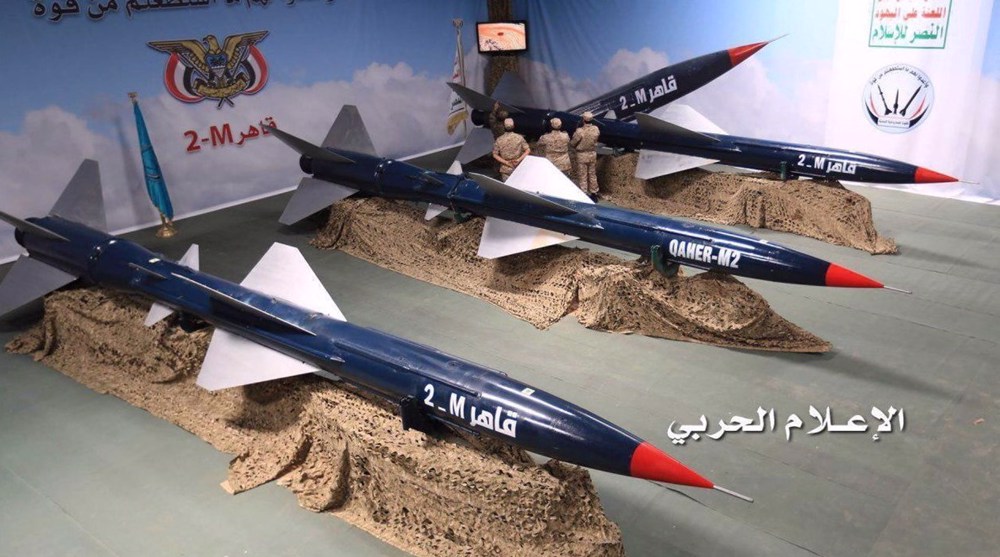
Introduced into operational use in late 2015, the Qaher-1 has a range of 250 km and a warhead of 200 kg, approximately the same as the CSS-8 and Tondar-69.
In March 2017, a new version, the Qaher-2, was introduced with a range of 400 km and a payload of 350 kg. It is also a two-stage missile with an inertial guidance system.
Repurposing the Qaher to carry a 75 percent more massive warhead required extensive development and surprised foreign observers, who began to speculate about foreign assistance.
Ballistic arsenal expansion
The surprises were just beginning, as Yemen introduced a dozen new missile systems over the next five years, with little resemblance to any foreign systems.
The first fully indigenous design appeared in 2015 when the simple finless SSMs Najm al-Saqib were introduced and deployed in two versions, with ranges of 45 and 75 km and payloads of 50 and 75 kg, respectively.
Two years later, the Badr missile series appeared, also in the category between large-caliber rocket artillery and SRBM, with a range of 130 to 160 km, whose development was possibly influenced by the older imported rocket artillery arsenal.
Entry into the club of countries with medium-range ballistic missiles (MRBM) occurred in September 2016 with the Burkan or Volcano series, based on the Scud-C design, but with an increased range from 550 to 800 km.
Five months after the Burkan-1 was showcased, Yemen introduced its successor, the Burkan-2, with a range of 1,000 km but a halved payload of 250 kg.
The Burkan-2 missile is composed of aluminum alloy, contrasting the steel airframes used in older Scuds, and unlike its predecessor and successor, it has a triconical warhead design rather than a conical one.
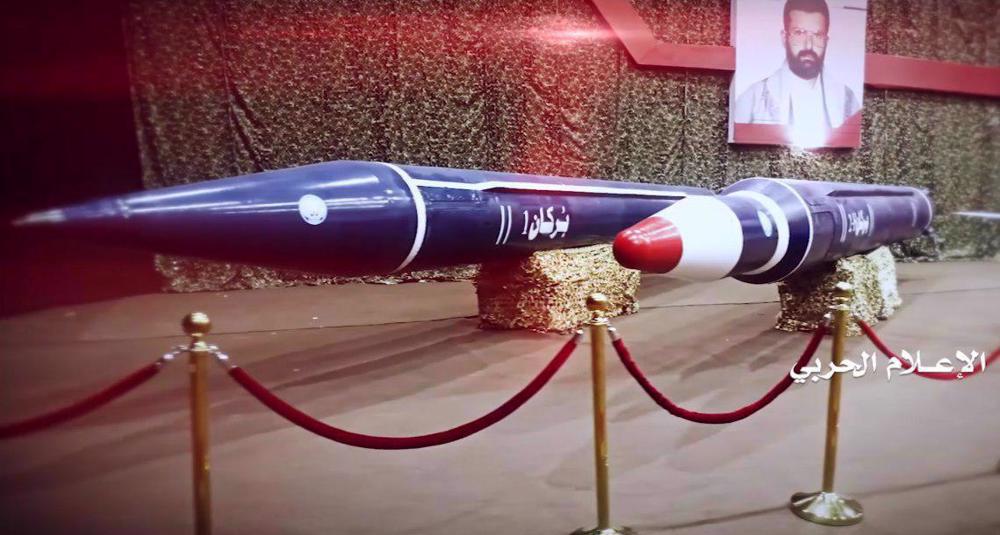
Yemen is not the first country to develop its own models based on the Scud, as five other countries have done so before them, but the Yemeni achievement is incredibly impressive due to the conditions of war, occupation and territorial blockade imposed by Western and some Arab states.
An additional aggravating circumstance was that, according to the enemy coalition's claims, they destroyed a significant number of warehouses with older stocks of ballistic missiles in airstrikes.
In August 2019, the third version of the series, the Burkan-3, was introduced, with an increased range of 1,200 km, adjustable up to 1,800 km, and the same payload as its predecessor.
The aforementioned ballistic missiles proved to be effective and had a devastating effect on enemy infrastructure and the loss of hundreds of soldiers, forcing them to suspend the invasion and agree to a ceasefire in 2022.
Yemen's ballistic missile development continued at a rapid pace, and in September 2022 they unveiled the Hatem-1 MRBM, with a range of 1,450 km and a payload of 500 kg, and two years later an improved version, the Hatem-2, of unknown specifications.
While the solid-fueled Hatem series increases range and payload compared to the older liquid-fueled Burkan series, it is smaller in size and therefore easier to transport and more stealthy.
In September 2023, at a spectacular military parade, the newest liquid-fueled Tufan MRBM was unveiled, with a range of 1,950 km and a warhead payload of 800 kg, both of which were record-breaking at the time.
This undertaking also placed the Zionist entity within range of Yemeni missiles, resulting in multiple retaliatory strikes by Yemen for their genocidal campaign against Palestinians in Gaza,
In addition to advances in MRBM technology, Yemen continued to develop more advanced SRBM models during the 2020s, such as the Karar and Tankil, and the Asif and Mohit anti-ship ballistic missiles.
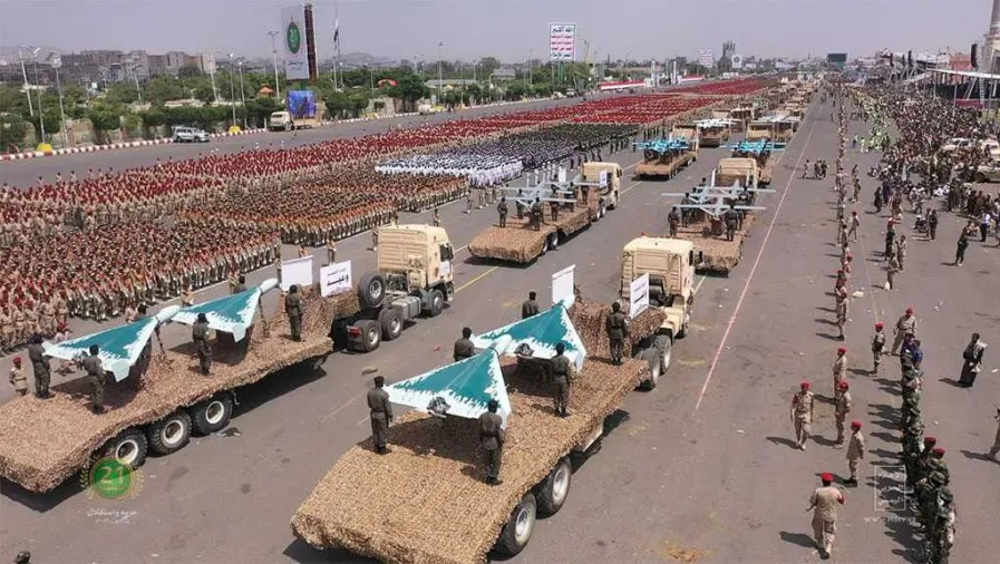
Furthermore, Quds-4 cruise missiles as well as Waeed-2, Samad-3, Samad-4 and Yaffa kamikaze drones have been developed, which, besides MRBMs, can reach the territory of occupied Palestine.
Joining the hypersonic club
In March 2024, Yemen surprised the world again when it announced that it had joined a small circle of five countries with hypersonic ballistic missiles.
Yemeni armed forces stated that they successfully tested a solid-fueled hypersonic missile with high destructive capability that can reach speeds of up to Mach 8 or almost 9,900 km/h.
The missile is thus significantly faster than previous Yemeni MRBMs with a maximum speed of Mach 5, which is also the boundary between supersonic and hypersonic speeds.
A hypersonic missile named Palestine and decorated with a Palestinian keffiyeh on its warhead was launched for the first time on June 5 at a military target near the Israeli-occupied port of Eilat, some 1,900 km away.
Three months later, on September 15, Yemeni officials announced that they had targeted an Israeli military base near Ben Gurion Airport, 2,040 km away, with an upgraded hypersonic missile which reached its target in 11 and a half minutes.
Yemeni military sources further announced that it was a two-stage hypersonic missile, Palestine-2, with a speed of Mach 16 and high maneuverability.
Footages of the launch, impact, and failed interceptors confirm that the missiles achieved their target and that the much-vaunted Israeli air defense systems failed to intercept them.
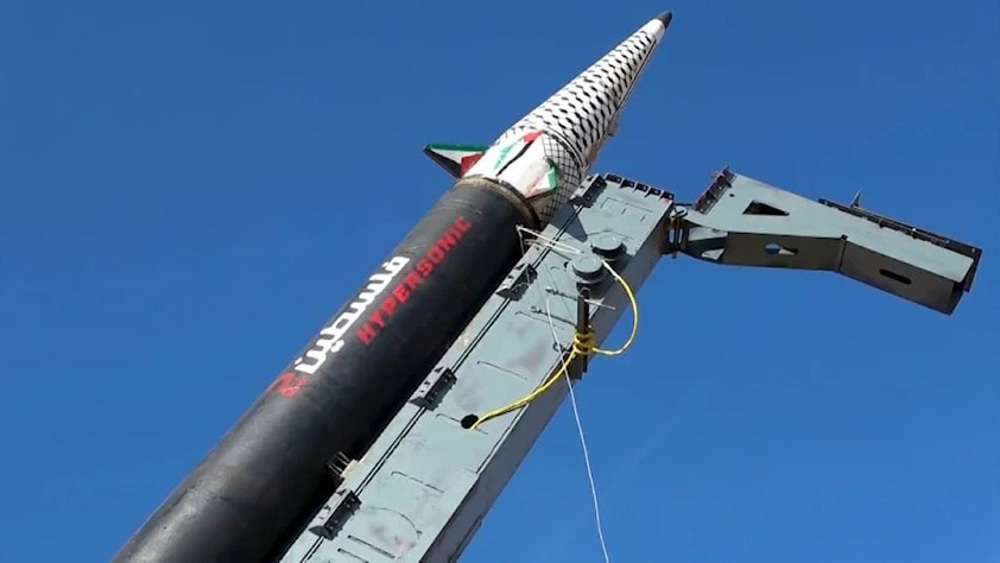
Unlike other hypersonic missile manufacturers, namely Russia, China, India, and Iran, Yemen uses the simplest hypersonic technology that emphasizes speed rather than maneuverability.
However, even small oscillations in trajectory at such speeds are enough to prevent successful interceptions by Israeli systems like Arrow, which are designed for precise kinetic hits.
In recent days, Yemen has repeated successful retaliatory hypersonic strikes on the occupied Palestinian territories, hitting a target south of Tel Aviv with a Palestine-2 missile on December 20 and wounding at least 20 illegal settlers.
Three days later, the same missile struck a military target near Tel Aviv again, fulfilling desired objectives and sending thousands of settlers into shelters.
On December 28, a Palestine-2 missile also targeted the Nevatim Airbase, used in the latest Israeli attacks on civilian targets near Sana'a Airport in the Yemeni capital.
This time, the American THAAD air defense system, put into use after the Iranian ballistic strikes, was used to attempt the interception, but despite pompous claims of a shootdown, no evidence was given.
Yemen noted that its armed forces are fully prepared to confront the Israeli-American-British aggression, stressing that they will continue their military operations in support of Palestinians in Gaza until the aggression is ended and the siege on the blockaded territory is lifted.
Ansarullah leader Abdul-Malik al-Houthi has termed the Yemeni launch of hypersonic missiles at Israeli targets "a very important achievement," saying they have surprised the enemies and caused immense disappointment among the political and security apparatus of the Israeli regime and the United States.
Hamas says reserves right to retaliate for commander assassination
Civilizations must unite against unilateralism, warmongering: Iran’s deputy FM
VIDEO | Resistance against occupation
China expands use of Iranian rail corridor for cargo transit
Ukraine’s Zelensky says open to dropping NATO bid for security guarantees
Israel kills 3 in south Lebanon as it threatens ‘wide-scale’ attack
VIDEO | Iran’s mega solar plant to power 2.5 million homes
Hamas warns against Israel's plans to 're-engineer' Gaza


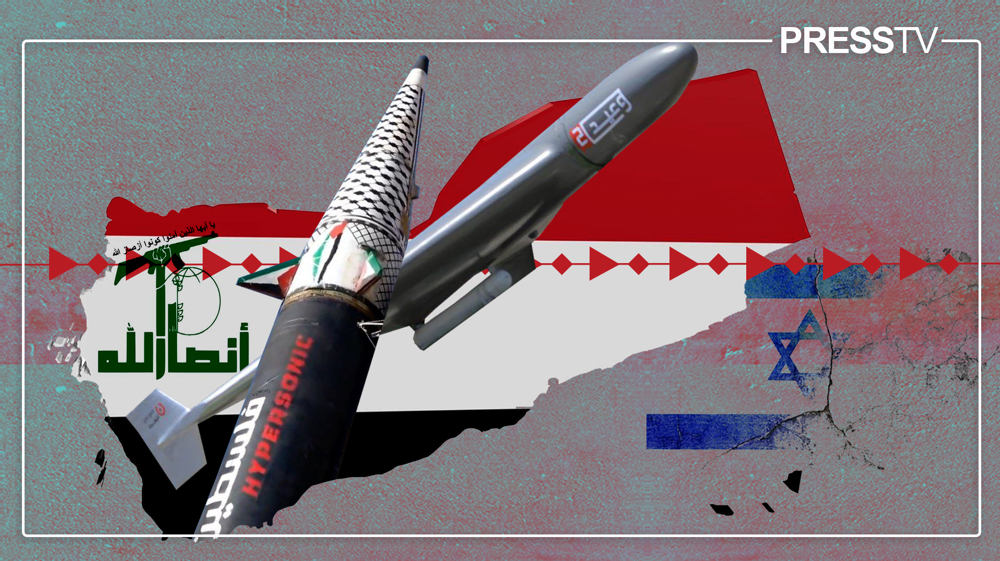
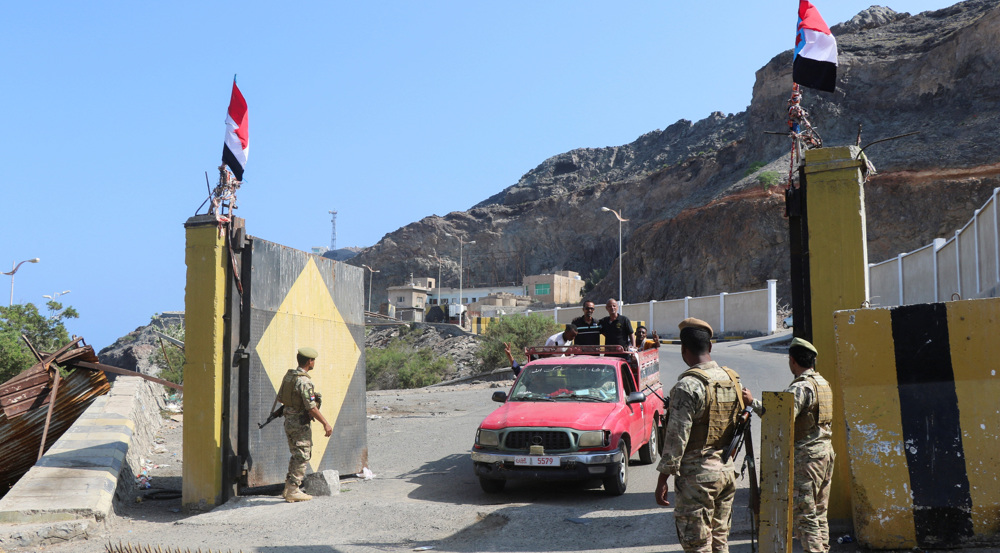
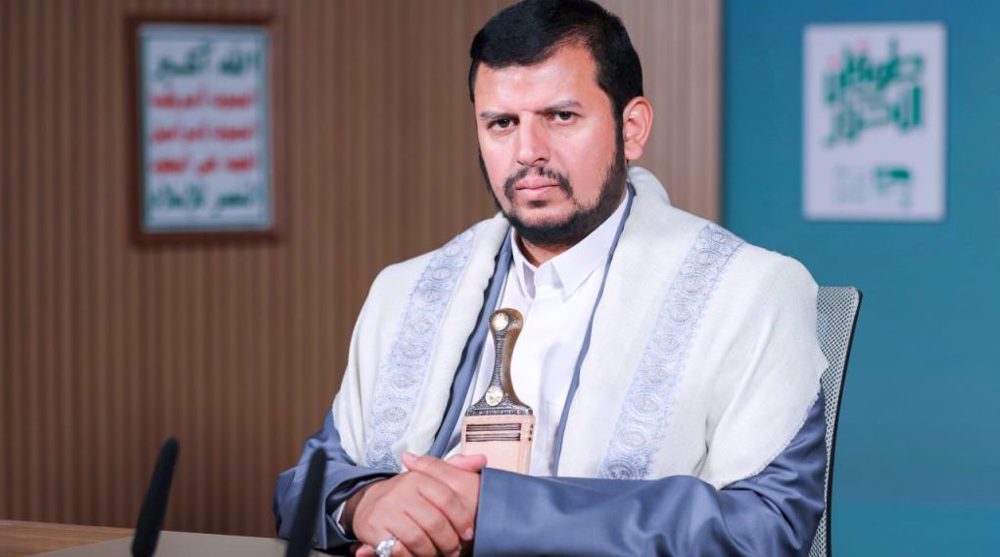




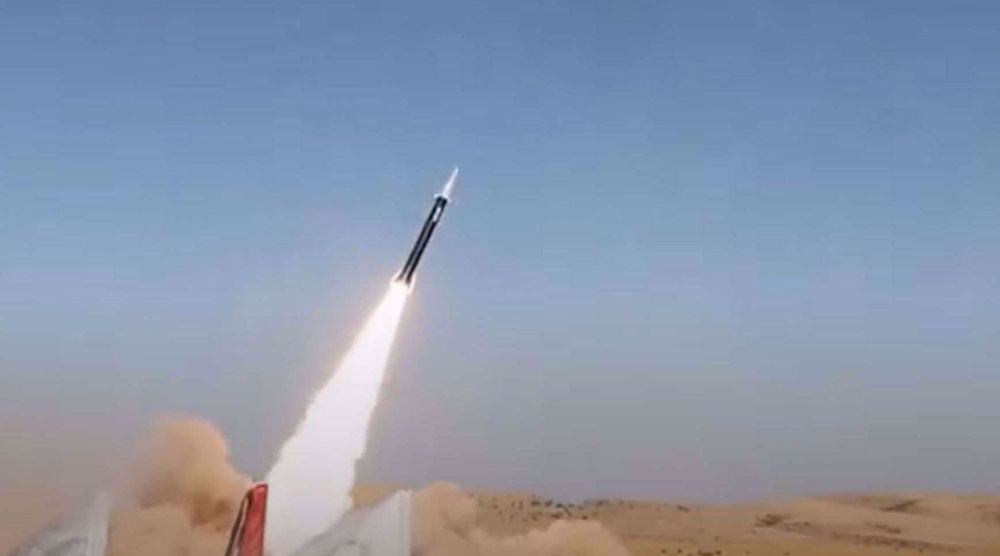
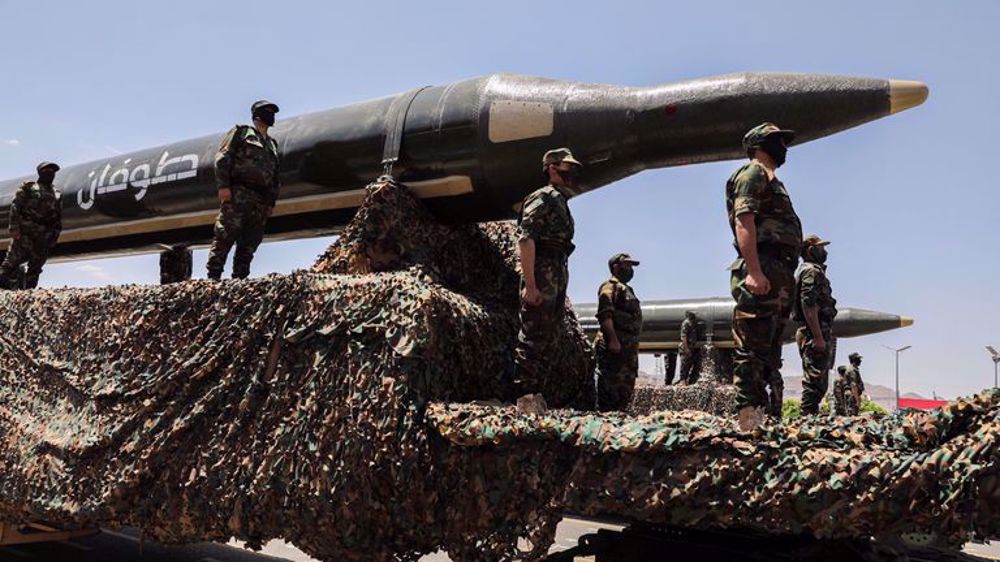




 This makes it easy to access the Press TV website
This makes it easy to access the Press TV website